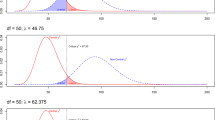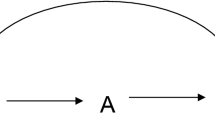Abstract
In regression analysis, when the covariates are not exactly observed, measurement error models extend the usual regression models toward a more realistic representation of the covariates. It is common in the literature to directly propose prior distributions for the parameters in normal measurement error models. Posterior inference requires Markov chain Monte Carlo (MCMC) computations. However, the regression model can be seen as a reparameterization of the bivariate normal distribution. In this paper, general results for objective Bayesian inference under the bivariate normal distribution were adapted to the regression framework. So, posterior inferences for the structural parameters of a measurement error model under a great variety of priors were obtained in a simple way. The methodology is illustrated by using five common prior distributions showing good performance for all prior distributions considered. MCMC methods are not necessary at all. Model assessment is also discussed. Results from a simulation study and applications to real data sets are reported.



Similar content being viewed by others
References
Berger JO, Sun D (2008) Objective priors for the bivariate normal model. Ann Stat 36:963–982
Bolfarine H, Cordani LK (1993) Estimation of a structural linear regression model with a known reliability ratio. Ann Inst Stat Math 45:531–540
Buonaccorsi JP (2010) Measurement error: models, methods, and applications. Chapman & Hall/CRC, Boca Raton
Carroll RJ, Ruppert D, Stefanski LA, Crainiceanu CM (2006) Measurement error in nonlinear models, 2nd edn. Chapman & Hall/CRC, Boca Raton
Chen M-H, Shao QM, Ibrahim JG (2000) Monte Carlo methods in Bayesian computation. Springer, New York
Cheng C-L, Riu J (2006) On estimating linear relationships when both variables are subject to heteroscedastic measurement errors. Technometrics 48:511–519
Cheng C-L, Van Ness JW (1999) Statistical regression with measurement error. Arnold, London
de Castro M, Bolfarine H, Galea M (2013) Bayesian inference in measurement error models for replicated data. Environmetrics 24:22–30
Fang K-T, Li R (1999) Bayesian statistical inference on elliptical matrix distributions. J Multivar Anal 70:66–85
Fuller WA (1987) Measurement error models. Wiley, New York
Gamerman D, Lopes HF (2006) Markov chain Monte Carlo: stochastic simulation for bayesian inference, 2nd edn. Chapman & Hall/CRC, Boca Raton
Grubbs FE (1983) Grubbs’s estimator. In: Kotz S (ed) Encyclopedia of statistical sciences, vol 3. Wiley, New York, pp 542–549
Gustafson P (2004) Measurement error and misclassification in statistics and epidemiology. Chapman & Hall/CRC, Boca Raton
Johnson VE (2007) Bayesian model assessment using pivotal quantities. Bayesian Anal 2:719–734
Lachos VH, Cancho VG, Aoki R (2010) Bayesian analysis of skew-\(t\) multivariate null intercept measurement error model. Stat Papers 51:531–545
Meng X-L (1994) Posterior predictive \(p\)-values. Ann Stat 22:1142–1160
R Core Team (2016) R: a language and environment for statistical computing. R Foundation for Statistical Computing, Vienna
Richardson S, Gilks WR (1993) A Bayesian approach to measurement error problems in epidemiology using conditional independence models. Am J Epidemiol 138:430–442
Vidal I, Iglesias P (2008) Comparison between a measurement error model and a linear model without measurement error. Comput Stat Data Anal 53:92–102
Wang, G. (2004). Some Bayesian methods in the estimation of parameters in the measurement error models and crossover trial. Ph.D. dissertation, Department of Mathematical Sciences, University of Cincinnati, Cincinnati
Wang G, Sivaganesan S (2013) Objective priors for parameters in a normal linear regression with measurement error. Commun Stat Theory Methods 42:2694–2713
Acknowledgements
We would like to thank the Editor-in-Chief and three referees for their valuable comments, which led to an improved version of the paper. This work was partially supported by Proyecto FONDECYT-1130375, Chile. The first author also acknowledges support from CNPq, Brazil.
Author information
Authors and Affiliations
Corresponding author
Appendices
Appendix 1: Sampling under the right-Haar prior
For the right-Haar prior in Section 3, samples from the posterior distribution of the parameters in (3) are drawn by cycling the steps 1–6 below:
-
(1)
Draw independent \(Z_1, Z_2, Z_3 \sim N(0,1)\), \(C_1 \sim \chi ^2_{n-1}\) and \(C_2 \sim \chi ^2_{n-2}\),
-
(2)
Compute \(\sigma _1 = (s_{11} / C_1)^{1/2}\),
-
(3)
Compute
$$\begin{aligned} \sigma _2 = \big [s_{22} (1 - r^2)\big ]^{1/2} \left[ \frac{1}{C_2} + \frac{1}{C_1} \bigg ( \frac{Z_3}{C_2^{1/2}} - \frac{r}{(1-r^2)^{1/2}} \bigg )^2\right] ^{1/2}, \end{aligned}$$ -
(4)
Compute \(\rho = \psi (W)\) and
$$\begin{aligned} W = -\frac{Z_3}{C_1^{1/2}} + \frac{C_2^{1/2}}{C_1^{1/2}} \frac{r}{\big (1-r^2\big )^{1/2}}, \quad \text {where} \ \psi (v) = \frac{v}{\big (1+v^2\big )^{1/2}}, \end{aligned}$$ -
(5)
Compute \(\mu _1 = \bar{x} + Z_1 s_{11}^{1/2} / (n C_1)^{1/2}\) and
-
(6)
Compute
$$\begin{aligned} \mu _2 = \bar{y} + \frac{Z_1 r s_{22}^{1/2}}{(n C_1)^{1/2}} + \bigg ( \frac{Z_2 }{C_2^{1/2}} - \frac{Z_1 Z_3}{(C_1 C_2)^{1/2}} \bigg ) \bigg (\frac{s_{22} \big (1-r^2\big )}{n} \bigg )^{1/2}. \end{aligned}$$
Appendix 2: Tables
In this appendix, we present tables summarizing some results from our simulation study. ‘Median’, ‘Length’ and ‘CP’ stand for the average of the posterior medians, the average of the length of the 95% HPD intervals and the coverage probability of the 95% HPD intervals, respectively (Tables 3, 4, 5, 6, 7 and 8).
Rights and permissions
About this article
Cite this article
de Castro, M., Vidal, I. Bayesian inference in measurement error models from objective priors for the bivariate normal distribution. Stat Papers 60, 1059–1078 (2019). https://doi.org/10.1007/s00362-016-0863-7
Received:
Revised:
Published:
Issue Date:
DOI: https://doi.org/10.1007/s00362-016-0863-7




